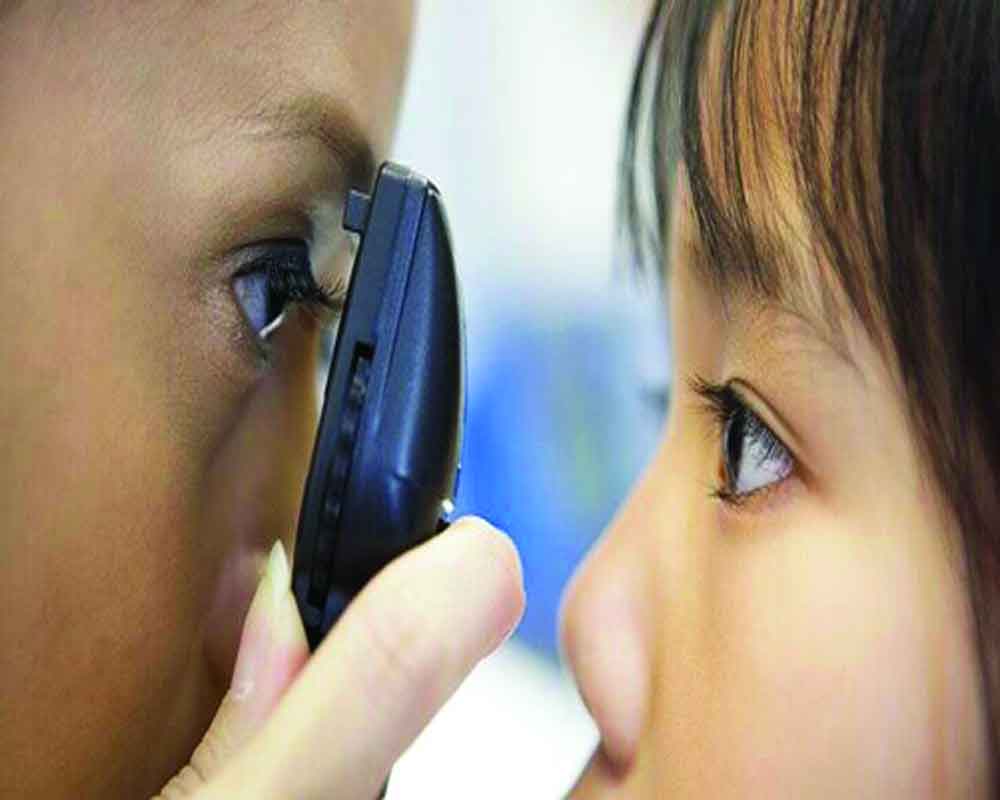An eye impairment can be especially traumatising for children and their parents but new technology comes to the rescue. By Team Viva
What is the most traumatising time for parents of infants? Certainly, when the child is crying, in pain or unable to express himself/herself as s/he cannot speak. For children, being unable to clearly explain their symptoms is the reason that they find an outlet in crying to express their discomfort. This problem worsens when it comes to babies with congenital eye disease. The children don’t audibly express that something is wrong, which makes diagnosing eye disease in infants much more difficult. It requires parents and pediatrics to act like detectives in order to find clues and make deductions. And this is where a new form of testing using Artificial Intelligence (AI) can help.
Unlike the traditional method of having a doctor lead the child’s gaze with a finger or a device, a new technology called DIVE uses a computer screen, removing the element of human interference and outputting more precise visual stimulation. In addition, it can measure eye movement, automatically tracking children’s eyes with greater accuracy than a doctor’s visual observation of their reactions.
After collecting children’s reactions, it has to be determined if they are normal. Tornado Pan, country manager of Huawei, a telecommunications equipment company, says, “This is where the help of AI comes in. It records the performance of children with ordinary vision and those suffering from impairment at different ages. AI analyses this data to learn the difference between children with and without eye diseases. When a new child undergoes testing, the machine learning model can provide a supplementary judgment on the child’s condition. The device provides the visual stimuli, captures and analyse the child’s reaction, then employs AI to make a judgment. In comparison with traditional manual testing, this represents a big step forward. However, like most standard medical technologies, the current DIVE in its early stages still requires that the user goes to an ophthalmologist for testing, as it relies on the interpretation of its results by an expert. Employing AI to make judgements allows inexperienced examiners to have an easy interpretation of visual assessments and to be able to identify children with visual problems.”
What makes it crucial is when you consider World Health Organisation (WHO) statistics, it say that there are around 19 million children in the world suffering from visual impairment. With timely intervention, the problems of 70-80 per cent of them can be prevented or treated. In this context, the timing of diagnosis and treatment becomes the key to deciding the children’s future.
Most eye diseases occur in the first five years of life. Early diagnosis is extremely important. Unfortunately, a lack of parental knowledge and awareness means that many children miss the optimum diagnosis period. The proportion of kids suffering from eye disease who receive early treatment is just one third of the total. Most of them go undiagnosed for a long time, affecting their eyesight and educational opportunities. In low-mid income countries, going blind is an ever-present threat for some children.
A recent study described how AI can be applied to patients with retinal diseases as it demonstrated that a computer could learn to accurately and reliably recognise such common eye diseases as macular degeneration and diabetic retinopathy.
While it could take a specialist decades of practical experience to reach the highest levels of expertise, the study revealed that the computer could recognise such things after a few days.
Looking at the existing methods of testing, there are three problems with it — First, the doctor’s presence itself is enough to attract the child’s attention and is therefore a form of interference. Second, the final judgement relies completely on human interpretation, necessitating highly professional and experienced doctors. Third, this method requires active cooperation between the doctor and the patient but many infants cannot correctly follow the doctor’s instructions.
Whereas, the newer diagnostic technology uses light waves to take high-resolution, cross-section images of the eye to give doctors a way to map and measure the retina in detail.
The scans are then used to spot common conditions like macular degeneration, in which a part of the retina called the macula, deteriorates, and diabetic retinopathy, a complication of diabetes that causes the blood vessels in the retina to swell and leak fluid. Both are dangerous conditions that can cause blindness if they are not diagnosed and treated at the right time.
Researchers predict that such technology will have uses across the world. In resource-rich countries like the United States, it can reduce the critical time between symptoms of a disease, its diagnosis and treatment. It’s a win-win for both patients and the doctors.
Due to the rapid pace of innovation, the use of AI will continue to become more and more streamlined with our lives. As technology continues to be adapted and tested, there is hope that life for the visually-impaired will see fewer obstacles.
While this new technology can provide assistance to disadvantaged groups, for the majority of sufferers of treatable illnesses, researchers say, early detection and prevention of these illnesses is still the key to improved quality of life. Meanwhile, the key to increasing the success rate of treatment is paying more attention to children’s eyesight and discovering problems as early as possible.


























